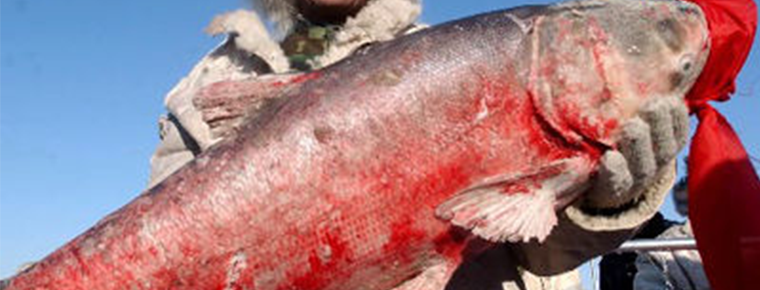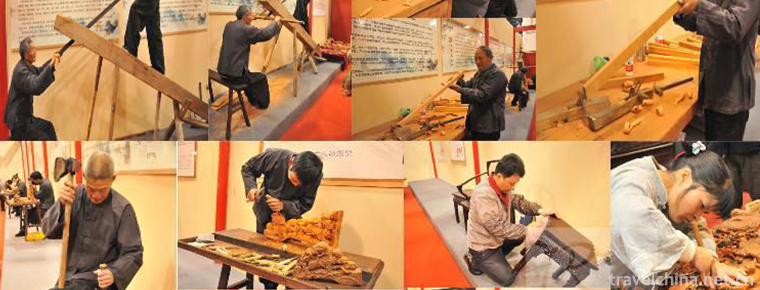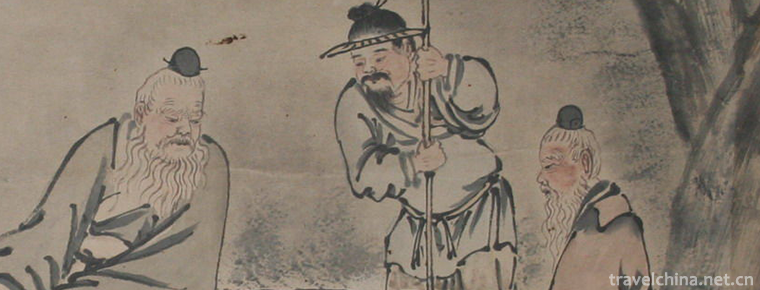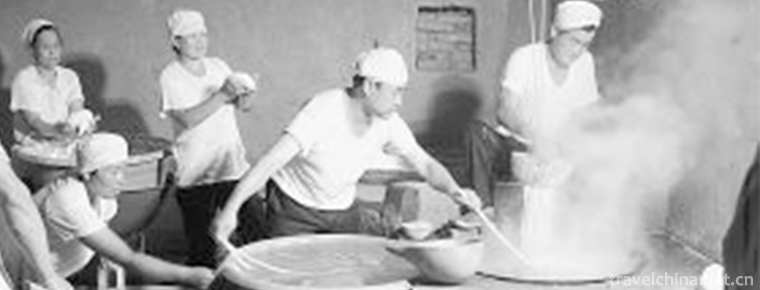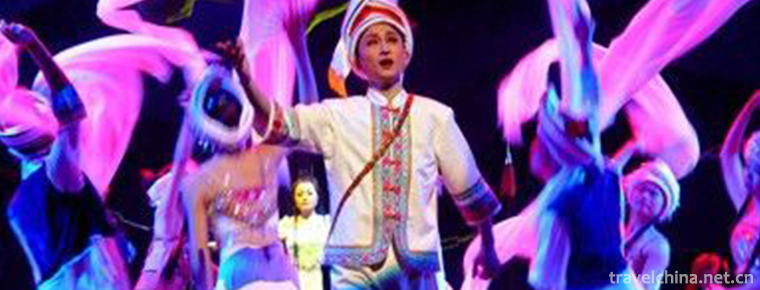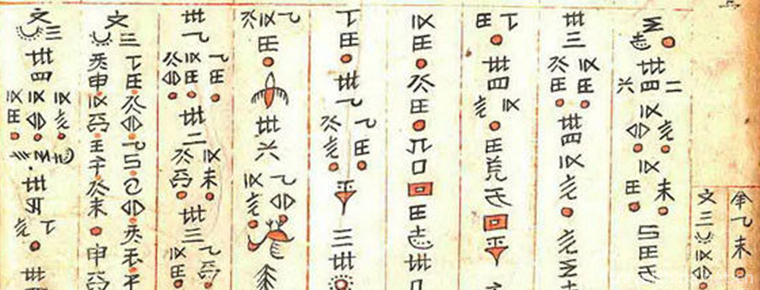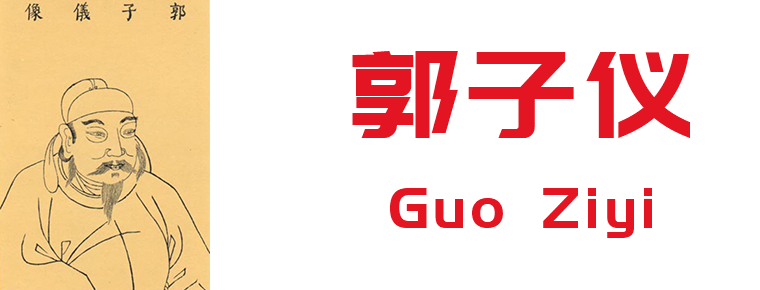Yueqing Poplar Wood Carving
Yueqing Poplar Wood Carving
Yueqing boxwood carving, a kind of ornamental round carving art with boxwood as its material, is mainly popular in Houhengcun, Wengyuan Street and Lecheng Street of Liushi Town in Yueqing City, spreading to Wenzhou, Yongjia, Hangzhou, Shanghai and other places. Poplar wood carving with a long history and simple style is a folk handicraft carved with poplar wood. It is also called "Three Carvings in Zhejiang" together with Dongyang wood carving and Qingtian stone carving. The main producing areas are Wenzhou, Yueqing, Zhejiang Province.
On May 20, 2006, Yueqing Poplar Wood Carving was approved by the State Council to be included in the first batch of national intangible cultural heritage list.
In 2008, Xiangyang Town of Yueqing City was re-evaluated as the "Town of Chinese Folk Culture and Art" based on boxwood carvings.
Historical origin
Boxwood carving is named for its wood carved from boxwood. Boxwood grows slowly, with a diameter of only about 15 centimeters in forty or fifty years. So there are the saying that "it is difficult to grow boxwood in a thousand years" and "it is difficult to make a beat in a thousand years" (a beat in a musical instrument). Legend has it that the earliest folk artist who created statues of gods and Buddhas discovered by chance that the poplar wood was tough and smooth, with fine texture, yellow and ivory color, gradually deepening with age, simple and beautiful, and moderate hardness. It was the best material for carving small round carvings.
It is said that the boxwood carving was invented by a cowherd doll named Ye Chengrong in the late Qing Dynasty. Ye Chengrong is a native of Yueqing City, Zhejiang Province. One day, he was playing in a temple at the head of the village. He saw an old man sculpting a Buddha statue in the temple. He was attracted by the skill of the old man. He ran out of the temple, tied the cattle to a tree, dug up a sticky mud, sat at the entrance of the temple, and secretly learned to make sculptures. The old man is a well-known local folk artist. Seeing that Ye Chengrong is clever and eager to learn, he accepted him as an apprentice and taught him five kinds of skills such as round sculpture, clay sculpture, painting, gilding and relief. He made rapid progress and mastered this skill a year later. One day, Ye Chengrong was sculpting a statue of Buddha in Zixia Mountain of Baotai Mountain, Yueqing County. The Taoist in Guanzhong folded a poplar wood and asked him to carve a happy hairpin with it. In the process of carving, Ye Chengrong found that the wood of Populus boxwood is tough, delicate in texture, and its color and luster are inferior to those of other wood. It is a good material for carving. From then on, he began to carve with boxwood. In this way, the modern Yejia boxwood carving in the folk art garden of our country was born.
Yueqing Poplar Wood Carving was originated in Song and Yuan Dynasty, and was popular in Ming and Qing Dynasty. Yueqing woodcarving has a complete range of categories. On the basis of adhering to the tradition and maintaining the original style and charm of Huangyang woodcarving, it has made a bold breakthrough and brought forth new ideas. It has developed from "single carving" to "jigsaw carving" and "group carving", from "round carving" to "chopping carving" and "root carving", with more exquisite skills and more perfect works.
Place of Origin
The main origin of boxwood carving is Wenzhou and Yueqing in Zhejiang Province, Yueqing is the birthplace. Boxwood carvings originated from wooden carvings of small Buddha statues decorated with dragon lanterns on the popular "Dragon Lantern Festival" during the folk Lantern Festival. By the end of the Qing Dynasty, it had developed into a fine craftsmanship appreciation for people's desk decoration. Influenced by the styling style and lines of literati paintings in the late Qing Dynasty, the works have the characteristics of simple and mellow knife technique, fine and smooth, portrayal of figures with both physical and spiritual features, consideration of realistic structure and poetic painting. Most of the content themes show the characters in Chinese folk myths and legends, such as Baxian, Shouxing, Guan Gong, Maitreya Buddha, Guanyin and so on.
Because Wenzhou area is close to the mountain forest, artists can draw materials nearby, which has played a very convenient and promoting role in the development of poplar wood carving. Through continuous efforts and research of generations of artists, the excellent traditional style and traditional techniques of poplar wood carving have finally been formed. The most typical one is hollow-out technique, which is the main way to form a vivid and exquisite image of poplar wood carving. In terms of techniques, it is most fully and perfectly embodied in such subjects as Astronomical Flowers, Red Silk Dance and Nazhao Naohai.
artistic characteristics
The main material of Yueqing yellow poplar wood carving is yellow poplar, which is a dwarf evergreen shrub and grows slowly. As the saying goes, "Populus boxwood can hardly grow in a thousand years". According to the Compendium of Materia Medica, "Populus boxwood is hard to grow in nature, only an inch in age, but it will retreat when it meets leap". Yueqing County Chronicle has similar records. A leap year can be described as slow growth. Boxwood usually grows for four or fifty years before it can be used for sculpture. Most of the wood is only about 3 to 5 inches in diameter. It is suitable for carving small figures for desk appreciation. Populus boxwood is tough in texture, smooth in surface, delicate in texture, moderate in hardness and bright in color. Poplar wood can be compared with ivory carving after fine carving and polishing. Especially with the age, the color from light to deep, giving people a simple and beautiful, unique.
Wood carving tools include clay hammer, sculpture frame and clay box, as well as calipers, scrapers and various forms of sculpture knives. Tools for roughing are saws, wood hammers, iron hammers, etc. The main tools used for sculpture are chisels, which have many kinds and complete functions. They are inclined chisels, triangular chisels, flat chisels, round chisels, medium steel chisels, reverse chisels, reverse chisels, warping chisels, needle chisels and hand saws, bamboo hairpins, drag drills, etc. Its operation is more meticulous, which is divided into more than ten processes, such as sketching, plasticizing mud draft, selecting wood, operating rough billet, carving solid billet, meticulous trimming, sanding and polishing, fine engraving, waxing and polishing, and matching foot basin. Wire carving is one of the most exquisite techniques in wood carving. It can make the works vivid, exquisite, elegant and beautiful, and produce dynamic.
Related types
There are three types of Yueqing poplar woodcarving, and their modeling ideas, techniques and procedures are different.
One is the traditional type, mainly with a single figure shape, but also group carving or sculpture;
The second is root carving, which takes natural poplar root as material and uses root modeling.
Thirdly, splitting the wood blocks which can not be used for character carving, and deliberately carving with the natural texture after splitting, all conform to the nature, not making fine carving. Traditional sculpture has character model, and material type should be suitable for it, so there are clay sculpture drafting, material selection, blank finalization, solid blank finalization and other procedures; while root sculpture is random, flexible in conception, without clay sculpture, but we must pay attention to maintaining the unique shape meaning of tree roots, splitting sculpture will focus on the basis of texture modeling.
Inheritance significance
Yueqing boxwood carving fully demonstrates the wisdom of folk craftsmen, showing a variety of different styles in the course of historical development, such as Mingzhi wood carving knife method rounded, concise and smooth; Qingzhi wood carving knife method clear, smooth and round, and so on. The process of boxwood carving is complex, and the degree of delicacy and process requirements of each process are incomparable with other carvings, and can not be replaced by modern technology.
Up to now, the material sources of Yueqing poplar wood carving are in crisis. At the same time, the loss of professionals is serious, new people are difficult to sustain, and individual workshops are scattered, so it is difficult to have an impact. These conditions all affect the development of boxwood carving technology, and it is urgent for relevant parties to formulate plans to rescue and protect this characteristic technology.
The state attaches great importance to the protection of intangible cultural heritage. On May 20, 2006, the intangible cultural heritage was approved by the State Council and listed in the first batch of national intangible cultural heritage list.
Yueqing Huangyang Wood Carving "Good Year" was selected by the State Post Office as the postcard of the 2005 China Post New Year (Award). Yueqing Poplar Wood Carving was introduced into the first batch of national "non-heritage" projects.
Famous figure
Zhu Zi Chang
Zhu Zichang (1876-1934), a famous folk sculptor in Wenzhou, inherited the traditional sculpture techniques, combined with the characteristics of poplar wood, and used unique techniques to create many excellent works, which greatly promoted the development of poplar wood carving. His works of "hide-and-seek", "Five Zis Ximituo" and "Cloth Bag Monk" are all well-known works with vivid images, rich expressions and exquisite simplicity. In 1909, his work "Monk for Epilepsy" won the first prize in the Nanyang Exercise Competition, and later generations praised him for his smooth knife, light and vivid clothes, vivid shape and fresh and meaningful characters.
Wenzhou is situated on the Southeast coast, with convenient overseas transportation. Since the Yantai Treaty between China and Britain in 1876, Wenzhou has been opened as a trading port with active foreign trade. At that time, Wenzhou had set up an exporting arts and crafts acquisition business, which operated on a larger scale. Plus Yueqing, Yongjia, Xianju and other places are rich in poplar wood resources, and the conditions of supply, production and marketing are all available. A new situation of development of poplar wood carving has emerged. Gradually formed a group of artists engaged in the production of poplar wood carving and art schools represented by Zhu Zichang.
Wang Feng Jie
Wang Fengzuo (1902-), a famous woodcarver of Huangyang in Yueqing, was well-known among his colleagues in the 1950s. He studied art at the age of thirteen. Four years later, he made his debut by creating an illustration of "Drinking in Yellow Crane Tower". Later, Huang Chongshou, the assistant of Buddha sculptor, benefited a lot. His work "Ear Digging Arhat" is as tall as the real person. It has a vivid look with a crooked mouth, one eye open and one eye closed. He also "steals" art in Zhu Zichang, with which his works can be chaotic. After liberation, his works ("Suwu Shepherd", "Cowherd and Weaver Girl") were exhibited at the folk art exhibition of five provinces in East China, and won the first prize with Chen Yi's appreciation and praise from the art circle. The Soviet Union exhibition, Truth Daily and Literature and Art Daily, introduced Suwu Shepherd and was collected by Leningrad Museum.
Wang Du Fang
Wang Zhifang (1947 1), a member of the Chinese Arts and Crafts Association, is a professor of Zheng Ke, who is good at figure carving. After graduating from the Department of Special Arts of the Central Academy of Fine Arts, he set up Fenglin Wood Carving Factory. He has created works such as Li Bai and Thousand-Handed Guanyin for the Li Bai Memorial Hall and Yandang Mountain Guanyin Cave in Jiangyou County, Sichuan Province.
Yujin Shunyu Dingliang Brothers
Yueqing also has a couple of Yushi brothers: brother Jinshun, who is good at the figure modeling of traditional sculptures, especially at carving a group of cloth sacks monks with smiling eyes. His works Laughing Buddha and Ten Joys are vivid and full of humor. Disciple Ding Liang was appointed director of Huangyang Wood Carving Factory. His acting is carving animals, especially famous for "cattle". His works "Bull Fighting" and "The Earth" seize the bull's fighting momentum and the beautiful shape of bull's strength, draw lessons from landscape paintings, carve out the folds of the cow body, highlight the strength of the cow, and praise the pioneers of the times with the spirit of pioneering cattle. The successful work of Yu brothers shows a new generation of boxwood carving.
Zheng Sheng Ning
Zheng Shengning was born in 1943 in Xiangyang Town, Yueqing City, Wenzhou City, Zhejiang Province. He is a master of Chinese root art, a master of Chinese woodcarving art, a master of Zhejiang arts and crafts, a folk artist in Zhejiang Province, a senior craft artist, a visiting professor of Zhejiang Tourism Vocational and Technical College, and an honorary chairman of Zhejiang Root Art Society. He is good at boxwood carving, root carving and city sculpture. His works have won many national gold medals. His representative works include Laozi, Happy Grassland, Master Hongyi, Shoe Repairing, Lu Xun, Fish Basket Guanyin and so on.

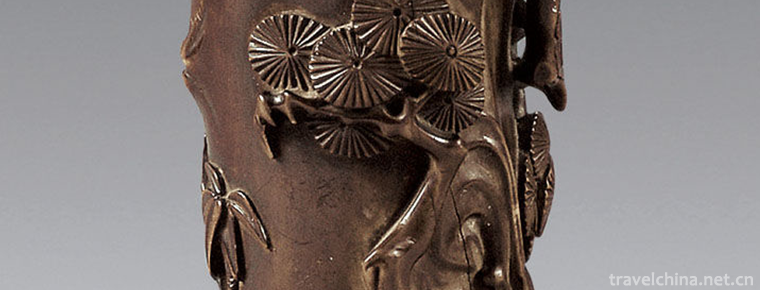
-
Yulong Snow Mountain
Yulong Snow Mountain is a snowy mountain group in Lijiang City, Yunnan Province.
Views: 155 Time 2018-10-17 -
Alipay
Alipay (China) Network Technology Co., Ltd. is the third party payment platform in China. It is committed to providing a simple, safe and fast payment solution.
Views: 218 Time 2018-11-13 -
Beijing Hangzhou Grand Canal Museum
The Beijing-Hangzhou Grand Canal Museum of China is located on the south side of the Canal Cultural Plaza in Gongshu District, Hangzhou City, Zhejiang Province, adjacent to the Gongchen Bridge, the te.
Views: 227 Time 2018-12-22 -
Dajing gate
Dajinmen, the national key cultural relics protection unit. Located at the northern end of Zhangjiakou City, it was built in the first year of Shunzhi in the Qing Dynasty (1644 A.D.) and has a history.
Views: 283 Time 2019-01-06 -
Winter capture of Chagan Lake
Winter fishing in Chagan Lake, namely ice and snow fishing (or hunting) in Chagan Lake in winter, is a traditional fishery production mode (custom) in Qianguoerros Mongolian Autonomous County.
Views: 166 Time 2019-04-15 -
Furniture Making Skills
Ming-style furniture making skills, local traditional handicraft in Suzhou City, Jiangsu Province, one of the national intangible cultural heritage..
Views: 193 Time 2019-05-05 -
Legend of Ronke Mountain
The legend of Mount Ronke is a local folklore spread in Quzhou, Zhejiang Province. Weiqi originated in China, and it is said that the root of Weiqi is Mount Ronke..
Views: 147 Time 2019-05-11 -
Longkou Fans Traditional Handicraft Production Techniques
In the late Ming and early Qing Dynasties, Zhaoyuan people created a new technique of making mungbean vermicelli, which was divided into three manual operation processes: powder pushing, powder leakin.
Views: 245 Time 2019-05-14 -
Southern Drama
Nan Opera, also known as Nan Opera and Shi Nan Diao, commonly known as "Gaotai Opera" or "People's Congress Opera", is a local opera in Enshi Tujia and Miao Autonomous Prefecture o.
Views: 266 Time 2019-06-07 -
Shui Shui Custom
"Shuishu" is a prototype written by the ancestors of the Shui nationality of the minority nationalities in Southwest China. Shui Shu custom is the formation, development and inheritance of S.
Views: 187 Time 2019-06-15 -
Guo Ziyi
Guo Ziyi (697 - 781 years), Zi Zi Yi, Iowa Zheng county (now Shaanxi) Weinan city Hua Zhou District ) People. The famous Tang Dynasty Politician , Militarist.
Views: 242 Time 2019-09-07 -
Deyang scenic spot
There are Sanxingdui ancient Shu civilization sites in Deyang City, where a large number of national treasure level cultural relics such as bronze Dali Man, bronze mask, bronze sacred tree, gold stick and Bian Zhang were unearthed. There are also the pangtong.
Views: 299 Time 2020-12-14




